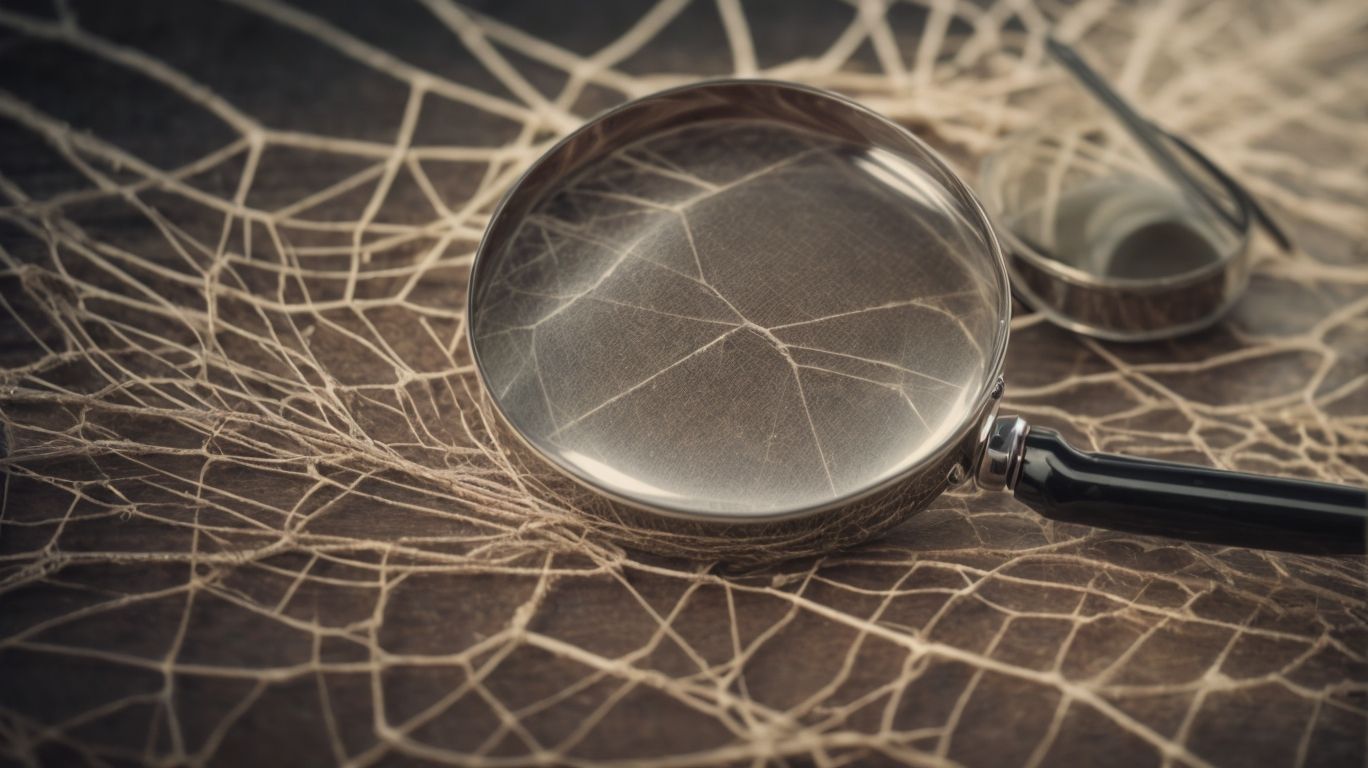Deception is a complex and common phenomenon that can have profound effects on relationships and society as a whole. From white lies to more serious falsehoods, people lie for a variety of reasons. But how can you tell when someone is being deceitful? By understanding the different types of lies, nonverbal and verbal cues, and behavioral signs of lying, you can become better equipped to detect deception.
In this article, we will explore why people lie, how they lie, and the consequences of dishonesty. We will discuss strategies for overcoming deception and fostering honesty in your interactions. Stay tuned to learn more about the psychology behind deception.
Contents
- 1 What Is Deception?
- 2 Why Do People Lie?
- 3 How Do People Lie?
- 4 How Can You Detect Lying?
- 5 What Are The Consequences Of Lying?
- 6 How Can You Overcome Deception?
- 7 Frequently Asked Questions
- 7.1 What is ‘Decoding Deception’ and why is it important in the field of Psychology?
- 7.2 How can I detect someone lying using nonverbal cues?
- 7.3 Are there any reliable scientific methods for detecting lying?
- 7.4 Are some people better at lying than others?
- 7.5 Can lying be detected in written or digital communication?
- 7.6 Is it possible for someone to be completely immune to deception detection?
What Is Deception?
Deception is the act of intentionally misleading others through lies or false information and is a complex phenomenon that has been extensively studied and researched by experts to uncover the truth behind people’s deceptive behaviors.
Deception can take various forms, ranging from subtle exaggerations to outright fabrications, making it a multifaceted aspect of human interaction. Understanding deception cues and practicing liespotting techniques are crucial skills in navigating through deceitful situations. It’s intriguing to delve into the psychology behind why individuals choose to resort to lying – from avoiding consequences and gaining advantage to protecting themselves or others. Some individuals, like prolific liars, may even turn deception into a habit, blurring the line between truth and falsehood in their everyday interactions.
Why Do People Lie?
People lie for various reasons, including to protect themselves, avoid consequences, gain advantages, or even fulfill their wishful thinking, reflecting the intricate interplay between behavior, psychology, and the perceived benefits of deception.
Research suggests that individuals may resort to lying as a coping mechanism when facing threatening situations. The fear of repercussions and the desire to present themselves in a favorable light can drive people to deceive others. Certain psychological cues, such as fear of rejection or the need for validation, can trigger dishonest behavior. Understanding the underlying motives behind lying behavior is crucial in unraveling the complexities of human cognition and social interactions.
What Are The Different Types Of Lies?
Understanding the different types of lies is crucial in unraveling the complexities of deception, dispelling myths and misconceptions surrounding truth and falsehoods, and shedding light on the diverse strategies employed by individuals to mislead others.
One common category of lies is white lies, which are often considered harmless fibs told to spare someone’s feelings or maintain social harmony. Even these seemingly innocent lies can have consequences, highlighting the blurred lines between honesty and deceit.
Fabrications, on the other hand, involve inventing false information to deceive others intentionally.
Omissions, another form of deceit, entail withholding crucial details or facts to manipulate the truth without outright lying. Despite the prevailing belief that lies can always be easily detected, the reality is more nuanced, as individuals may exhibit subtle detection cues that hint at their dishonesty, challenging conventional wisdom.
How Do People Lie?
The art of deception involves a blend of verbal indicators, body language cues, facial expressions, and behavioral patterns that collectively paint a nuanced picture of a person’s emotional state and truthfulness, highlighting the intricate ways in which individuals deceive others.
Verbal cues such as hesitation, changes in tone, or overly detailed explanations often signal underlying deception, serving as red flags for those attuned to these nuances.
Similarly, body language can reveal much about someone’s truthfulness; fidgeting, avoiding eye contact, or facial microexpressions can betray hidden emotions or intentions.
Emotional behaviors play a pivotal role in lie detection, as discrepancies between verbal statements and displayed emotions can uncover deceitful motives.
What Are The Nonverbal Signs Of Lying?
Nonverbal signs of lying encompass a spectrum of cues such as body language shifts, facial microexpressions, and inconsistent eye contact that experts meticulously analyze to uncover hidden truths and decode the unspoken language of deception.
Body language shifts play a crucial role in detecting lies as individuals may fidget, avoid eye contact, or exhibit nervous movements when being dishonest. Similarly, facial microexpressions are fleeting involuntary expressions that can betray underlying emotions, providing valuable insight into a person’s true feelings. Moreover, inconsistent eye contact variations, whether avoiding gaze or staring too intensely, often indicate discomfort or fabrication.
Experts also observe neck movements and analyze hand gestures to further assess the credibility of verbal statements, as these subtle actions can reveal subconscious intentions and reveal discrepancies in communication. By honing in on these intricate nonverbal cues, professionals can cultivate a deeper understanding of human behavior and better differentiate between truth and deception.
What Are The Verbal Signs Of Lying?
Verbal signs of lying encompass linguistic cues, voice modulation patterns, and subtle shifts in tone or cadence that provide valuable insights into the deceptive strategies employed by individuals, highlighting the intricate interplay between language and deceit.
These verbal indicators go beyond mere words; they delve deep into the subconscious cognitive processes that underlie deceptive behaviors, shedding light on the intricate web of lies woven by an individual. By analyzing linguistic patterns and voice stress analysis techniques, experts can unravel the tangled threads of deceit that often cloak the truth. The nuances of verbal communication can offer telltale signs of deception, exposing the slightest hesitations, inconsistencies, and evasions that betray the deceptive intent of the speaker.
What Are The Behavioral Signs Of Lying?
Behavioral signs of lying encompass a wide array of cues such as behavioral inconsistencies, eye movements, and physiological responses that serve as subtle indicators of deceit, offering valuable clues for truth wizards and deception experts to unravel hidden truths.
One of the intriguing aspects of studying deception lies in the realm of eye-tracking technologies, which can provide valuable insights into where a person’s gaze lingers during a deceptive interaction. For instance, a shift in eye movements towards the right could signal the activation of creative thinking, while a tendency to avoid eye contact might indicate discomfort and potential dishonesty.
Along with behavioral cues and eye movements, physiological responses also play a crucial role in detecting lies. Tools such as polygraphs measure changes in heart rate, skin conductivity, and breathing patterns, offering a physiological perspective on deception detection. These technologies can be powerful allies in the quest for truth, enabling experts to analyze minute changes in the body’s responses to uncover hidden falsehoods.
How Can You Detect Lying?
Detecting lying requires a combination of skills, training, and access to cutting-edge technologies and tools that enable individuals to decode the intricate web of deception with precision and accuracy, give the power toing them to separate truth from falsehood efficiently.
One of the key techniques utilized in lie detection involves eye-tracking software, which monitors subtle changes in eye movements and gaze patterns that may indicate deception. By analyzing these behavioral clues, experts can uncover hidden truths and unveil deceptive intent.
Additionally, voice stress analysis technology aids in detecting variations in vocal pitch, tone, and speech patterns that often accompany dishonesty, providing valuable insights into the credibility of verbal statements.
Pay Attention To Inconsistencies
Identifying inconsistencies in verbal and nonverbal cues is a fundamental aspect of detecting lying, requiring keen observation, effective interview skills, and a deep understanding of behavioral clues that reveal deceptive patterns and discrepancies.
One powerful technique to uncover deception is by developing a strong rapport with the person you are interacting with. When individuals feel at ease, they are more likely to let down their guard, making it easier to spot deception cues.
Pay attention to sudden changes in behavior, such as excessive eye contact or avoiding direct questions, as these can be indicative of attempts to deceive. Understanding the cognitive processes involved in lying, such as creating false narratives or withholding information, can provide valuable insights during conversations.
Look For Microexpressions
Microexpressions, fleeting facial expressions that betray true emotions, are key indicators of lying, providing valuable insights into a person’s genuine feelings and underlying motivations, making them essential cues for detecting deception.
These rapid and involuntary facial movements occur within fractions of a second, often revealing emotions such as fear, disgust, or contempt that an individual may be trying to conceal. By capturing these subtle cues, individuals trained in recognizing microexpressions can uncover hidden truths and decipher the intricate web of emotional behaviors associated with deceit.
Observe Body Language
Body language, including hand gestures, posture shifts, and subtle movements, conveys crucial deception cues that expert lie detectors use to analyze behavioral patterns and uncover hidden truths, emphasizing the silent language of deceit.
In terms of detecting lies, professionals pay close attention to neck movements and behavior clusters as additional indicators of deception. For instance, a person constantly touching or covering their neck may signal discomfort or dishonesty. Furthermore, behavior clusters involve a combination of gestures, facial expressions, and speech patterns that collectively suggest deception.
By observing these body language cues in a comprehensive manner, lie detectors can piece together a more accurate understanding of a person’s truthfulness. It’s not just about a single gesture or movement but rather the overall body language exhibited by an individual that can provide valuable insights into their intentions and honesty.
Listen To Verbal Cues
Verbal cues, such as linguistic patterns, speech inconsistencies, and voice modulation, provide critical insights into deceptive behaviors, enabling lie detectors to leverage advanced technologies and linguistic analysis to uncover hidden truths effectively.
In the world of lie detection, experts often referred to as truth wizards rely on a combination of linguistic indicators and cutting-edge voice stress analysis tools to spot subtle signs of deceit. These skilled professionals pay close attention to variations in pitch, tone, and speed of speech, which can hint at attempts to distort the truth.
By examining specific linguistic patterns used in statements, deceptive strategies can be deciphered. Certain phrases, hesitations, or alterations in language can serve as red flags, signaling potential falsehoods. This methodical approach allows truth wizards to unravel complex webs of deception and unearth the genuine narrative hiding beneath the surface.
Consider Context And Motive
Considering the context and underlying motives of individuals is crucial in deciphering deceptive behaviors, as truth wizards and lie detectors rely on behavioral clues, situational analysis, and motive assessment to unravel the intricacies of lying effectively.
By focusing on the non-verbal cues like facial expressions, body language, and speech patterns, these truth wizards adeptly decipher the subconscious signals individuals emit when fabricating falsehoods.
Examining the situational context in which the deception occurs provides vital information to differentiate between truth and deceit. Understanding the motive behind the lies is fundamental, as it sheds light on the underlying reasons prompting the deception.
Integrating sophisticated detection tools and behavioral indicators enhances the accuracy of lie detection, offering a comprehensive insight into the tangled web of deception.
What Are The Consequences Of Lying?
The consequences of lying can be profound, impacting relationships, trust, and societal norms, prompting extensive research and studies to understand the repercussions of deception on individuals and the broader fabric of society.
Through empirical investigations, researchers have unearthed a myriad of intricate ramifications that falsehoods can have on both personal and professional interactions. It’s fascinating to note how myths surrounding dishonesty have been dispelled, revealing the complex web of emotions and consequences that deceit weaves.
People often underestimate the power of truth wizards who can decipher lies, leading to a paradigm shift in how we view the role of honesty in fostering genuine connections.
How Can You Overcome Deception?
Overcoming deception involves fostering a culture of honesty, transparency, and effective communication, where individuals hone their skills, undergo training, and seek professional guidance to navigate the intricate landscape of deceit with integrity and authenticity.
One of the key practices in creating such an environment is to utilize communication tools that enhance clarity and openness in interactions.
These tools can include active listening, assertiveness training, and conflict resolution techniques to prevent misunderstandings and miscommunications that often lead to deceptive behaviors.
Seeking professional help from counselors, mentors, or mediators can provide invaluable support in developing emotional intelligence, building trust, and fostering genuine connections.
Practice Honesty And Transparency
Practicing honesty and transparency fosters trust, integrity, and authentic communication, serving as foundational pillars in combating deception and cultivating genuine connections based on truth and openness.
Behavior and communication skills play vital roles in how individuals navigate the intricacies of honesty and transparency. When people exhibit honest behavior and communicate openly, it builds a strong foundation for mutual understanding and respect. This openness paves the way for authentic relationships where individuals feel secure and valued. Through effective communication, individuals can express their thoughts and feelings with honesty, creating an atmosphere of trust and reliability. Such interactions are essential in fostering a culture of mutual respect and cooperation.
Communicate Effectively
Effective communication is key to navigating the complexities of deception, give the power toing individuals with the skills and tools to express themselves authentically, decode deceptive cues, and establish open dialogues that promote truth and transparency.
Through technology advancements and the prevalence of digital interactions, the way we communicate has evolved, adding new layers to understanding truthful interactions from deceitful ones. Communication skills training plays a crucial role in equipping individuals with the ability to discern behavioral cues that may signal deception.
By honing the art of active listening and being attuned to both verbal and non-verbal signals, one can more effectively unravel the intricacies of deceptive behaviors and foster environments of trust and honesty.
Seek Professional Help If Necessary
Seeking professional help can provide invaluable support in navigating complex deception scenarios, equipping individuals with specialized expertise, advanced technologies, and enhanced skills to detect lies and uphold the principles of truth and integrity.
The guidance offered by experts can significantly enhance one’s ability to recognize behavior clues and utilize detection tools effectively. Professionals in this field possess a deep understanding of deceptive tactics and the psychological aspects that influence dishonest behavior. By honing the necessary skills under their tutelage, individuals can become more adept at discerning truth from falsehood, thereby safeguarding themselves against potential harm or manipulation.
Frequently Asked Questions
What is ‘Decoding Deception’ and why is it important in the field of Psychology?
‘Decoding Deception’ refers to the process of identifying and interpreting nonverbal cues and behaviors to detect whether someone is lying. It is important in psychology because understanding deception can provide insights into human behavior and improve our ability to communicate and form relationships.
How can I detect someone lying using nonverbal cues?
Nonverbal cues such as body language, facial expressions, and changes in tone of voice can provide valuable information when trying to detect deception. For example, a person who is lying may avoid eye contact, fidget, or exhibit tense or defensive body language.
Are there any reliable scientific methods for detecting lying?
While there is no foolproof method for detecting lying, there are scientific techniques such as the polygraph (lie detector test) and microexpression analysis that can help identify deception. However, these methods should be used with caution and in conjunction with other evidence.
Are some people better at lying than others?
Some people may have a natural talent for deception, but research suggests that the ability to detect lies is not necessarily correlated with the ability to tell them. In fact, studies have shown that trained professionals, such as police officers and judges, are not much better at detecting lies than the average person.
Can lying be detected in written or digital communication?
Yes, while nonverbal cues are not present in written or digital communication, there are still several linguistic cues that can indicate deception. These include discrepancies in details, use of qualifying language, and changes in writing style or tone.
Is it possible for someone to be completely immune to deception detection?
No, even the most skilled liars may exhibit some nonverbal or linguistic cues that could give away their deception. However, some individuals may be more adept at masking these cues and making it more difficult to detect their lies. Additionally, certain psychological disorders may affect a person’s ability to accurately detect deception.




